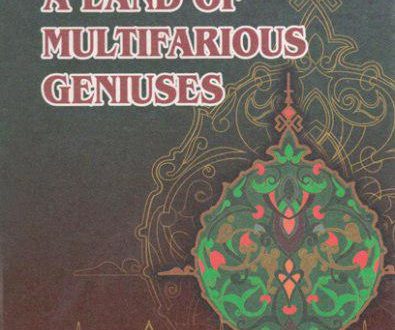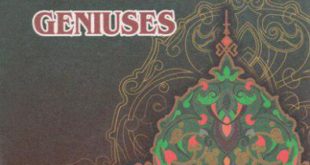Having spent his youth in Nasaf, at the beginning of the 12 century, Abu Hafs an-Nasafi took his way to Samarkand and spe the main creative part of his life there. In 1113-1114, he made pilgrimage through Baghdad to Holy Mecca for hajj. His visit Mecca took a year and the next year he came back to his native country. In his book “Kitab al-qand” Abu Hafs an-Nasafi mentions that on the way back home he attended the lessons in Baghdad delivered by Abu-l-Abbas Muhammad ibn Yunus al-Kudaymi and in Sarakhs by Abu-1-Fadl Muhammad ibn Ahmad as-Saighi.
Then Abu Hafs an-Nasafi continued his education at the scientific centre “Dar al-Juzjania” in Samarkand. His studies at this scientific and educational institution played the most important role in his becoming one of the most experienced scholars and estimated experts in the science of Hadiths. Later Abu Hafs an-Nasafi came to Bukhara and received a fruitful education in law from ash-Sheikh al-Imam ar-Rais Said ibn Muhammad al-Khoresmi who was one of the most estimated sheikhs of his time. Therefore, we feel rather noticeable influence of Bukhara schools of law and Hadiths on Abu Hafs an-Nasafi’s creative activity.
Having gained a great amount of experience in law and Hadith sciences, Abu Hafs an-Nasafi started teaching in the mosques and madrasahs of Samarkand. He left a huge amount of scientific heritage. According to informational sources, the number of the scientific works created by Abu Hafs an-Nasafi exceeds one hundred. He was especially fruitful in the field of the Hanafian law. He created 8 solid works in this field. Some of them, i.e. “Kitab ad-dair fi-1-fikh”, “Mashari’ ash-shari”, “Al-Masail fi-l-furu” or “Al-Masail fi-1-masail” are supposed not to have reached us. The ones that have reached us are “Al-Manzuma an-Nasafia fi-l-khilafiyat”, “Til-bat -at-talaba”, “Sharh al-usul li-l-Karkhi” and “Fatava shaykh al-Islam as-Sughdi”.
Abu Hafs an-Nasafi continued the traditions of al-Maturidia School in the field of the science of kalam. For instance, Abu Ali al-Hasan ibn Abd al-Malik al-Maturidi and Abu-l-Hasan Ali ibn al-Hasan al-Maturidi who was the successor of Sahaba Abu Ayyub Khalid al-Ansari were Abu Hafs an-Nasafi’s estimated teachers.
Having created a shortened version of the teachings of Imam al-Maturidi, he made great effort to spread widely his master’s (cachings throughout the Islamic world. His precious book “Aqaid an-Nasafi” is widely studied and disseminated in the Islamic world to which a number of comments have been devoted. Having described shortly the main principles and rules of the Muslim religion and its essence in the world of Islam, this book earned him great fame and glory among the acknowledged specialists of the Islamic teachings.
Abu Hafs an-Nasafi was also a great expert in the science of tafsir. His book devoted to this field of knowledge “At-Taysir fi (ilm) at-Tafsir” (4 tafsirs of the Holy Qur’an) is a proof of this opinion.
A number of verses used in his creative works may prove his incomparable talent in the field of poetry. Most descriptions of the meanings of Hadiths involved in his commentaries are also given in the style of verses. As the sources say, different experts in the field of Hadiths and law commented on his about a hundred works. About ten of them have reached us. They will certainly serve as the main original source for further investigations and researches which will be carried in near future on Abu Hafs an-Nasafi’s many-sided scientific career.
Abu Hafs an-Nasafi died on October 3, 537/1142 in Samarkand and was buried in Chakardiza graveyard next to the grave tomb of Imam al-Huda Abu Mansur al-Maturidi.
Abu Hafs an-Nasafi left a son Ahmad known by the nickname “Al-Majd” who was born in 1113-14. Abu Sa’d as-Sam’ani describes him (Abu-l-Lays Ahmad ibn Umar) as a handsome, closely related to his friends, well-educated and mature person. When as-Sam’ani visited Samarkand in 1154-55, he met Abu-l-Lays and had a fruitful scholarly conversation. As he writes Abu-l-Lays often used to visit him and borrow some rare books from him. Al-Majd an-Nasafi went to Hajj in 1156-57.
In 1157-58 when he was coming back home from Baghdad, he had to cross the city of Bistom. A group of robbers from the Ismaili group suddenly attacked the caravan and killed more than 70 people among which there were a number of scholars including al-Majd an-Nasafi. He was buried in a small village not far from Bistom.
Abu Hafs an-Nasafi was an encyclopaedic genius as he was engaged in different branches of the Islamic sciences. During his lifetime, he succeeded in making a substantial contribution to different fields of science and left deep traces in them. His position in the theory of such sciences as Hanafian law, Moturidian kalam, tafsir, morality and poetry makes a great importance for these sciences.
 Imom Buxoriy xalqaro ilmiy-tadqiqot markazi bukhari.uz
Imom Buxoriy xalqaro ilmiy-tadqiqot markazi bukhari.uz











